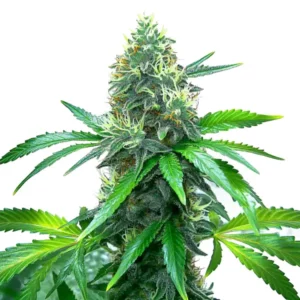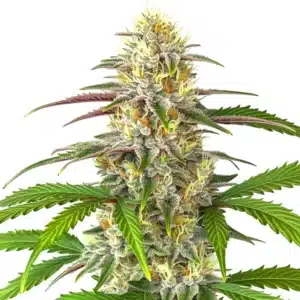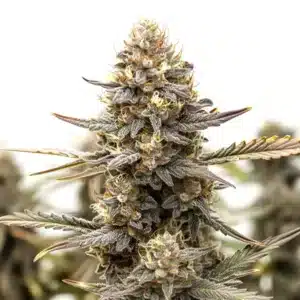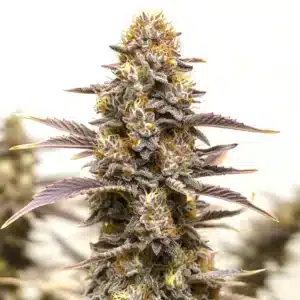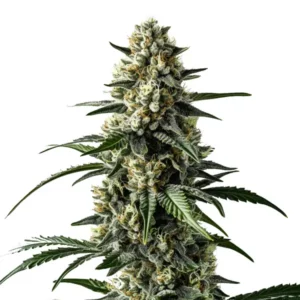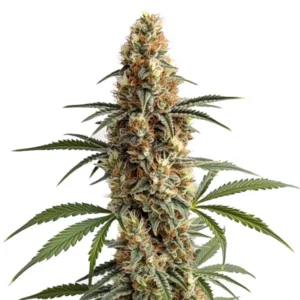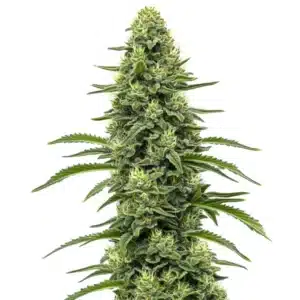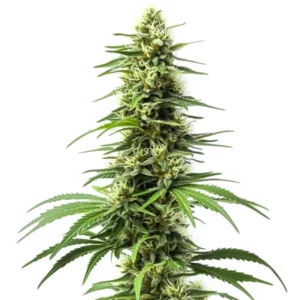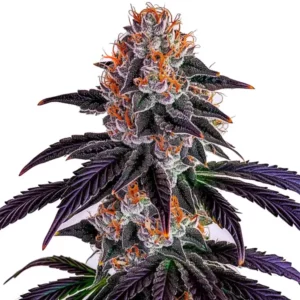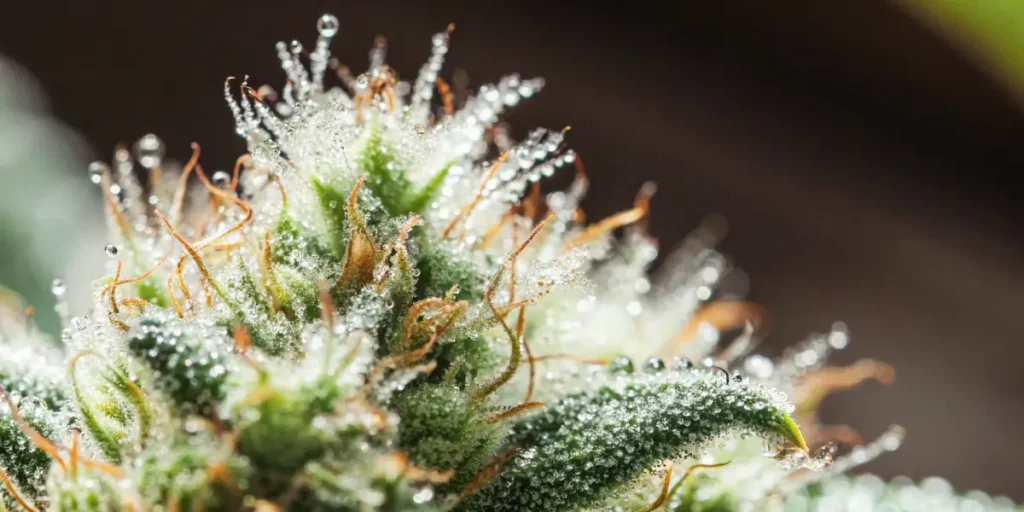
Volatile Organic Compounds in Cannabis
Volatile organic compounds in cannabis are the magical elements that give your favorite strains their distinct aromas. When you open a jar of cannabis, what hits your nose are these compounds. They are tiny chemical substances that evaporate quickly, making them easy to smell. Each cannabis strain has its own unique blend, contributing to its overall scent profile.
Think of plant compounds as the aromatic essence of cannabis. They are not just about making your weed smell nice. These compounds play a crucial role in how different strains affect your senses. Ever notice how some strains smell earthy, while others might have a citrusy or fruity aroma? That’s the work of these compounds.
Recommended Strains
OG Kush
|
|
THC | 20% - 24% (Medium) |
|
|
Type | Feminized |
|
|
Yield | Medium |
|
|
Phenotype | 55% Indica / 45% Sativa |
Blue Dream
|
|
THC | 17% - 24% (Medium) |
|
|
Type | Feminized |
|
|
Yield | High |
|
|
Phenotype | 50% Indica / 50% Sativa |
These aromatic elements in cannabis are not only significant for their scent but also for how they interact with other components of the plant. They may influence the effects of cannabinoids like THC and CBD, enhancing or modifying the overall experience. Understanding them can provide a deeper insight into cannabis’s complexity.
Furthermore, breeders and cultivators pay close attention to these aromatic compounds when developing new strains. The goal is often to create unique aromatic profiles that appeal to various consumer preferences. This focus highlights their importance beyond mere scent, playing a key role in product differentiation and marketability.
Health Effects of Volatile Organic Compounds in Cannabis
When you inhale cannabis, you’re also taking in these volatile organic compounds. But what does that mean for your health? These compounds can interact with your body in various ways. Some may even enhance the therapeutic effects of cannabis. For instance, certain compounds are known for their anti-inflammatory properties.
However, not all effects are necessarily positive. It’s crucial to understand both sides of the coin. While some compounds can offer health benefits, others might cause allergies or irritations. This is why knowing what you’re consuming is important. As a grower or consumer, being informed about these health effects can guide you in choosing the right strains for your needs.
The health effects of certain compounds in cannabis are an area of ongoing research. Scientists are continually exploring how these components contribute to the entourage effect, where various cannabis elements work together to produce unique effects. This complex interaction can enhance therapeutic benefits, offering potential relief for conditions such as anxiety or chronic pain.
Nevertheless, caution is advised, as the health effects of volatile organic compounds in cannabis can vary from person to person. Individual sensitivities and pre-existing health conditions can influence how one reacts to these compounds. Therefore, it’s essential to approach cannabis consumption with awareness and to consult healthcare professionals when necessary.
Promos & Deals
Measuring Volatile Organic Compounds in Cannabis Products
Measuring volatile organic compounds in cannabis products is essential. This process involves analytical techniques to determine the composition of these compounds in your cannabis. It can help you understand the quality and potency of the product. Advanced labs often use gas chromatography to break down these compounds for analysis.
For the average grower, measuring these compounds might seem challenging. But it’s not impossible. Some tools and kits are available to help you get a basic idea of the volatile profile of your cannabis. This is vital for ensuring that you’re delivering a high-quality product to your consumers. Knowing these measurements can help you improve your cultivation methods.
In recent years, the technology for measuring compounds in cannabis products has become more accessible. Portable devices and simplified testing kits allow growers and small-scale producers to gain insights without the need for sophisticated lab equipment. This democratization of testing empowers cultivators to make informed decisions about their crop quality.
Accurate measurement of these compounds is also crucial for regulatory compliance. As the cannabis industry grows, so does the importance of adhering to safety and quality standards. By measuring compounds in cannabis products, producers can ensure they meet the legal requirements and provide consumers with reliable and safe products.
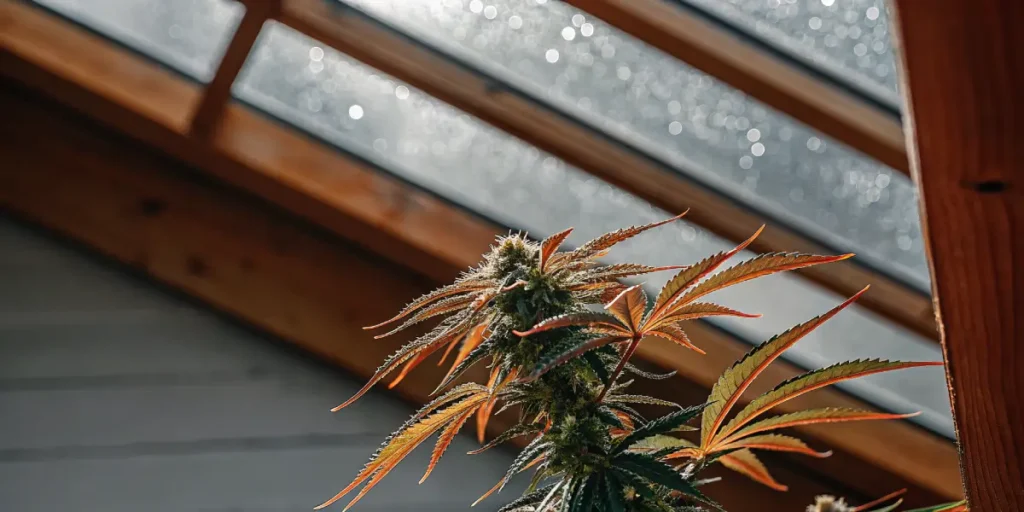
Volatile Organic Compounds Impact on Cannabis Aroma
The aroma of cannabis is one of its most distinctive features. Volatile organic compounds play a huge role in this. Each compound has its own scent, from floral and sweet to earthy and pungent. This diversity is what makes cannabis so unique. Growers often select strains based on their aromatic profiles to cater to different consumer preferences.
Take strains like Blue Dream, for example. Its sweet berry aroma is a result of its specific volatile compounds. These aromas can also indicate the presence of certain therapeutic properties. For instance, a citrusy scent might suggest the presence of limonene, known for its stress-relieving effects.
The aromatic compounds in cannabis impact its aroma beyond consumer pleasure. These scents can also provide vital information about the plant’s health and environment. For example, a change in aroma might indicate potential issues such as nutrient deficiencies or pest infestations, offering an early warning sign for growers.
Additionally, the impact of these aromatic compounds on cannabis plays a role in how it is marketed and perceived. Brands often highlight specific aromatic profiles to attract different segments of the market, such as those seeking relaxation or energy. This strategic use of aroma underscores its importance in the cannabis industry.
Cannabis Cultivation and Volatile Organic Compounds Emission
During cannabis cultivation, plants emit volatile organic compounds. These emissions can have various effects on the environment around them. They can influence the growth of other plants, attract pollinators, or deter pests. Knowing these emissions can help you create a more balanced and productive growing environment.
Experienced growers know that managing these emissions is crucial. It’s not just about the plants themselves, but also about the surrounding air quality. Keeping these emissions in check can lead to healthier plants and better yields. Strains like OG Kush have specific cultivation needs due to their volatile compound emissions, making them a popular choice for growers interested in detailed cultivation techniques.
Volatile organic compounds in cannabis cultivation and their emission can also influence local ecosystems. These compounds may impact soil microbiomes and interact with other plant species, potentially altering the dynamics of the surrounding vegetation. Knowing these interactions can aid in developing more sustainable cultivation practices.
Moreover, awareness of cannabis cultivation and volatile organic compounds emission is vital for compliance with environmental regulations. As the industry expands, there is a growing emphasis on reducing the environmental footprint of cannabis farming. Monitoring and managing emissions is a step towards achieving more eco-friendly cultivation methods.
Reducing Volatile Organic Compounds in Cannabis Cultivation
Reducing volatile organic compounds in cannabis cultivation can be beneficial. Over time, high levels of these compounds can impact air quality and worker health. Implementing strategies to minimize their release is important. This can include ventilation systems or choosing strains with lower emissions.
Growers can also focus on organic cultivation practices. This involves using natural pest control methods and reducing synthetic inputs. By doing so, you can create a cleaner growing environment and a healthier end product. These efforts contribute to sustainable cannabis cultivation, benefiting both the environment and consumers.
Another method for reducing volatile organic compounds in cannabis cultivation is the use of biofilters. These systems use microorganisms to break down volatile compounds, thereby cleaning the air. Such technologies can be integrated into existing ventilation systems to further mitigate emissions.
Additionally, selecting low-emission strains and optimizing growing conditions can reduce the release of volatile organic compounds. By carefully managing factors such as light, temperature, and humidity, growers can influence the plant’s emission profile, thus supporting a more sustainable cultivation process.
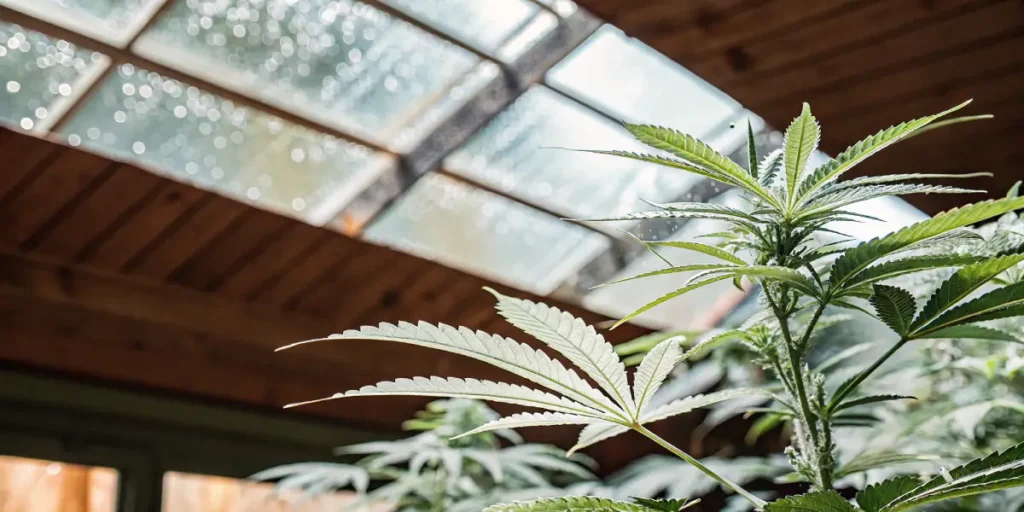
FAQs
What are volatile organic compounds in cannabis?
Volatile organic compounds are tiny chemicals found in cannabis that evaporate quickly and contribute to the plant’s aroma. Each compound has a unique scent, making different strains smell distinct. They are responsible for the earthy, citrusy, or sweet aromas you experience when you smoke or vape cannabis.
These compounds are not only about the smell. They can also affect the experience you have when consuming cannabis. Some may enhance the therapeutic effects or interact with other cannabinoids like THC and CBD. Knowing about these compounds can help you choose strains that best suit your preferences.
The diversity of volatile organic compounds in cannabis can be attributed to various factors, including genetics and growing conditions. This diversity results in a wide array of aromatic profiles that can appeal to different consumer preferences. Knowing these compounds can deepen your appreciation for the complexity of cannabis.
Furthermore, volatile organic compounds in cannabis are a topic of interest for researchers studying the plant’s potential health benefits. As science progresses, we may uncover new insights into how these compounds contribute to the therapeutic properties of cannabis, offering new avenues for medical applications.
How do volatile organic compounds affect the aroma of cannabis?
The aroma of cannabis is mainly due to its volatile organic compounds. Each strain has a unique blend of these compounds, contributing to its distinctive smell. For example, a strain like Blue Dream has a sweet, berry-like scent thanks to its specific volatile profile.
These aromas are not just for olfactory pleasure. They can also indicate the presence of certain therapeutic compounds. For instance, a pine-like scent might suggest the presence of pinene, known for its potential anti-inflammatory properties. Knowing these aromas can enhance your cannabis experience.
Volatile organic compounds impact on cannabis aroma can be likened to a symphony, where each compound plays a part in creating the overall scent profile. This complexity allows for the creation of unique and appealing aromatic experiences, making the selection of cannabis strains a personalized journey.
In addition to personal enjoyment, the aromatic profile can serve as a guide for consumers seeking specific effects. For example, those looking for relaxation might gravitate towards strains with a lavender-like scent, indicating the presence of linalool, which is known for its calming properties.
Can volatile organic compounds in cannabis have health effects?
Yes, volatile organic compounds in cannabis can have health effects. Some compounds may offer therapeutic benefits, such as anti-inflammatory or anti-anxiety properties. However, others might cause allergic reactions or respiratory irritation in some people.
As a consumer or grower, it’s essential to be aware of these potential health effects. This knowledge can guide you in selecting strains that offer the benefits you desire while minimizing any adverse reactions. Always consider testing and analyzing the composition of your cannabis to ensure its quality.
The health effects of volatile organic compounds in cannabis are a subject of considerable interest in medical research. These compounds may interact with the body’s endocannabinoid system, potentially influencing mood, pain perception, and immune responses. Such interactions highlight the need for further studies to fully understand their impact.
On the flip side, individuals with sensitivities or allergies should exercise caution. The health effects of volatile organic compounds in cannabis can vary, and what benefits one person might not work for another. It’s crucial to start with small amounts and pay attention to how your body reacts, ensuring a safe and enjoyable experience.
How are volatile organic compounds measured in cannabis products?
Measuring volatile organic compounds in cannabis products involves using analytical techniques. Labs often use gas chromatography to separate and identify these compounds. This helps in knowing the chemical makeup of the cannabis and ensuring its quality.
For growers and small-scale producers, there are simpler tools available. These can provide basic insights into the volatile profile of your cannabis. Knowing these measurements can help in improving cultivation techniques and delivering a high-quality product to consumers.
Advanced methods for measuring volatile organic compounds in cannabis products continue to evolve. Techniques such as mass spectrometry, often coupled with gas chromatography, provide detailed insights into the composition and concentration of these compounds, offering a comprehensive view of the product’s quality.
Besides to lab testing, industry standards and certifications play a vital role in ensuring product quality. By adhering to these standards, producers can guarantee that their products meet consumer expectations and regulatory requirements, reinforcing trust in the cannabis market.
How can growers reduce volatile organic compounds in cannabis cultivation?
Reducing volatile organic compounds in cannabis cultivation can be achieved through several methods. Implementing effective ventilation systems is crucial for managing these emissions. This not only improves air quality but also enhances the overall growth environment for the plants.
Organic cultivation practices also play a significant role. By minimizing the use of synthetic chemicals and focusing on natural pest control, growers can reduce the release of volatile compounds. This leads to healthier plants and a more sustainable cultivation process, ultimately benefiting both the grower and the consumer.
Incorporating practices such as cover cropping and crop rotation can also contribute to reducing volatile organic compounds in cannabis cultivation. These techniques improve soil health and create a more balanced ecosystem, which can, in turn, reduce the need for chemical inputs.
Education and research are essential in driving innovation in cultivation techniques. As growers learn more about the effects and management of volatile organic compounds, they can adopt new strategies that promote sustainability and efficiency, paving the way for a greener future in the cannabis industry.


